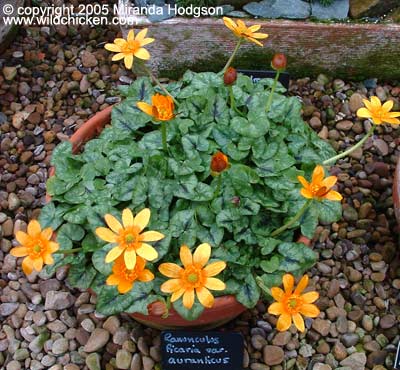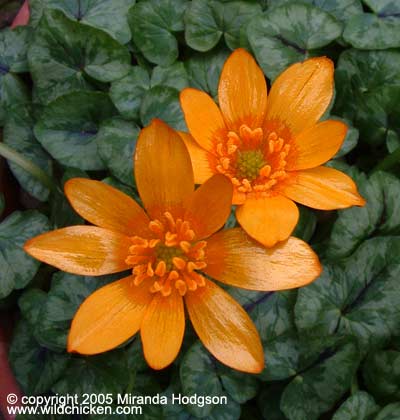


Ranunculus ficaria var. aurantiacus (also called lesser celandine and at one time known as pilewort, referring to the shape of the roots)
Ranunculus
ficaria var. aurantiacus
Deciduous hardy perennial. An orange-flowered variety of the common lesser celandine. Can be used in a woodland setting, in borders, for edging or at the water's edge. The wildflower is invasive and this one may be too, if it's very comfortable - in which case, use only for containers. Flowers attract bees and beetles.
Flowers in spring, leaves persist till summer.
Habit - spreading, low growing.
Leaves - glossy, heart-shaped, dark green with silvery markings.
Flowers - bright orange, cup-shaped, with eight petals and orange stamens.
Full sun to dappled shade.
Moist but well-drained, otherwise not too fussy.
Hardy.
Little needed unless you plan to restrict the plant's spread. If you do need to do this, take care to remove all the small rounded sections of root from the soil, otherwise it will spread.
The whole plant dies back in summer, not reappearing again till the following spring, so mark it to prevent accidental damage.
Spreads naturally by its tuberous and roots and by seed. This orange type may not come true from seed if the other types are growing nearby.
Garden Plant Information list of plant care info by botanical name